the burrup peninsula. famous for two things: mining operations and aboriginal rock art.
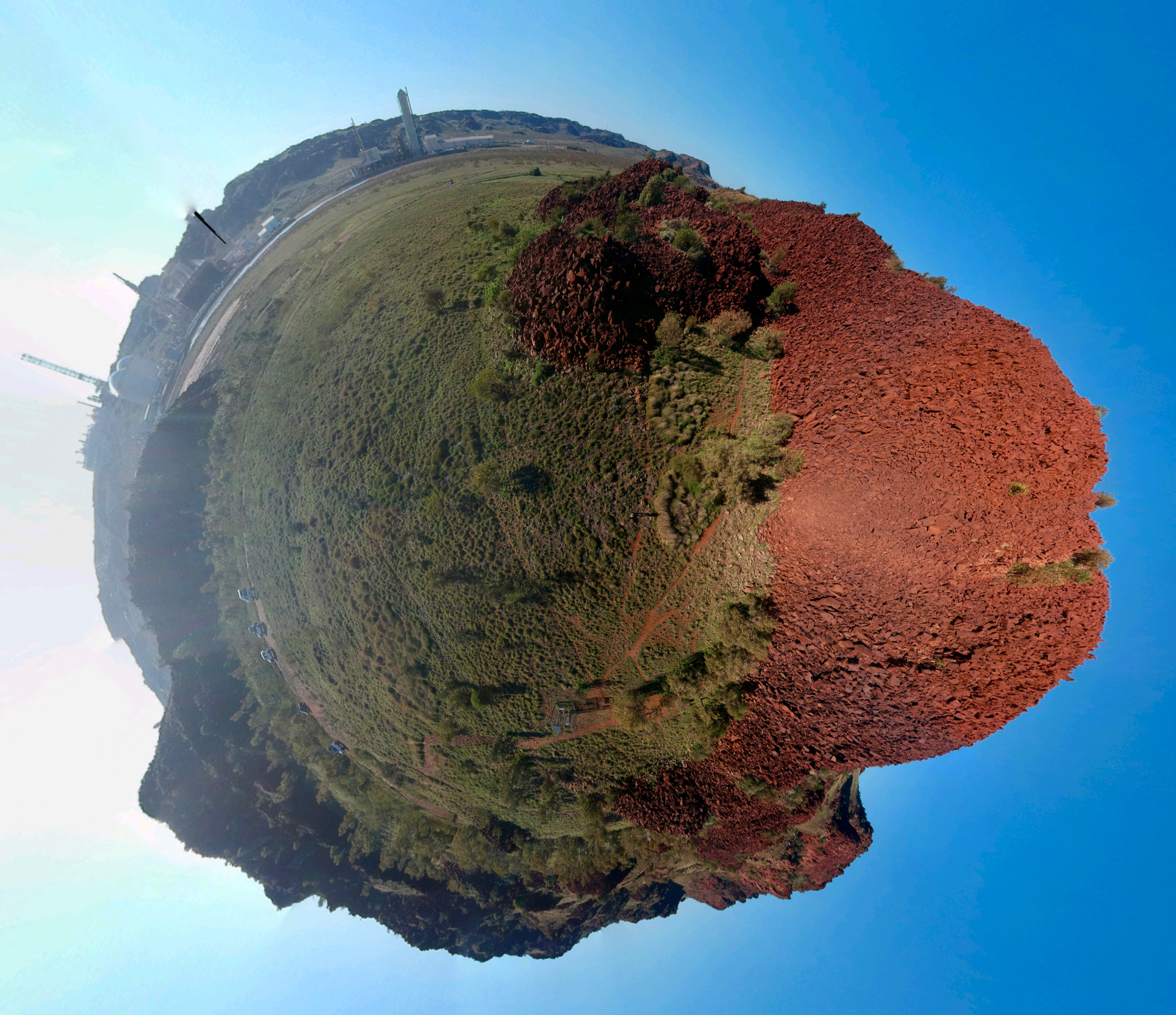
this tiny planet sums it up: the hills of red rocks with art among the oldest on the planet on one side, a gas plant on the other.
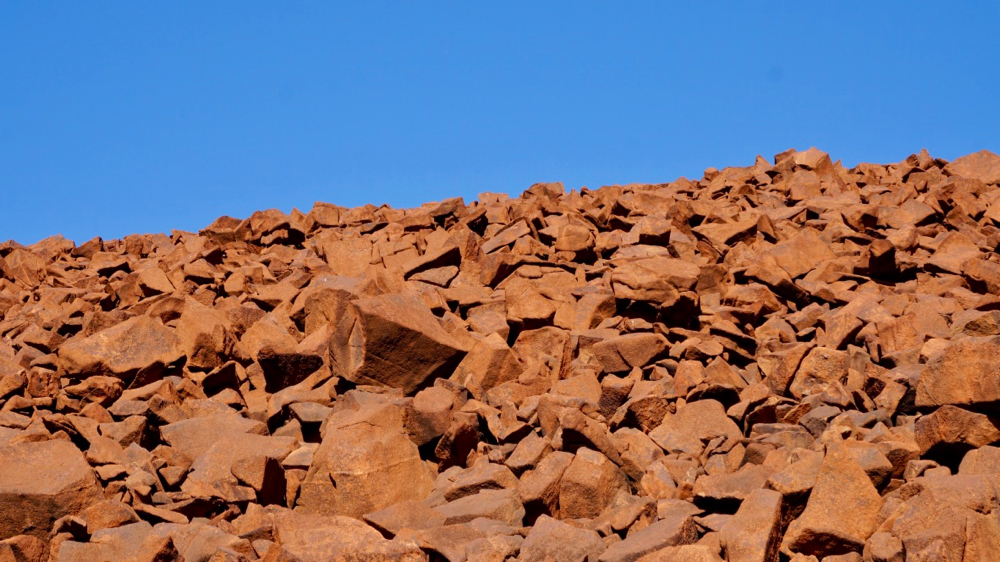
to us this may look like nothing more than a field of rubble, and an inconvenient one at that (visitors are actually asked not to climb the field; i suspect there are two reasons: so they don’t disturb the rock art and to not hurt themselves).
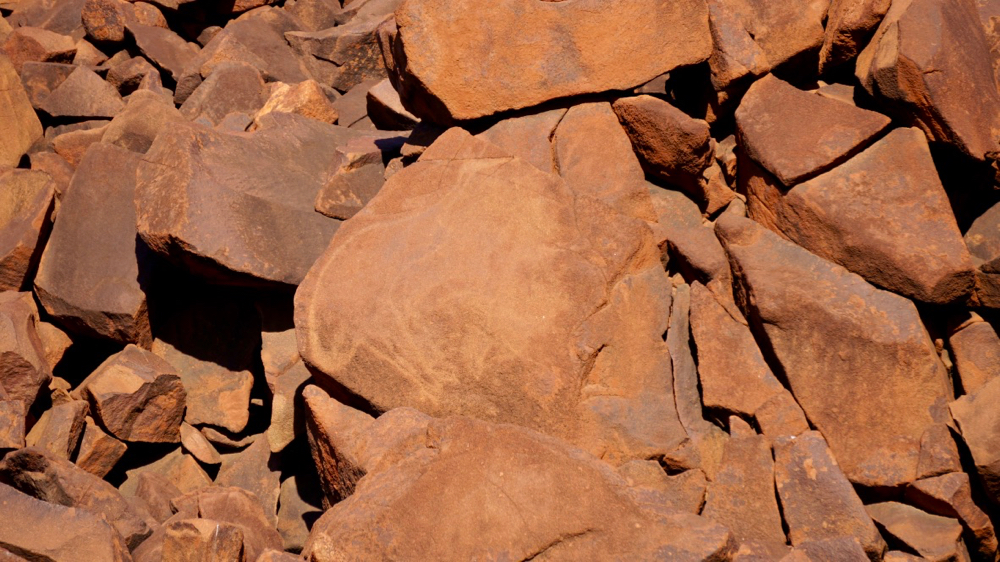
ancient aborigines clearly had other ideas: they saw opportunity, a massive drawing board. the rocks are plastered with petroglyphs.
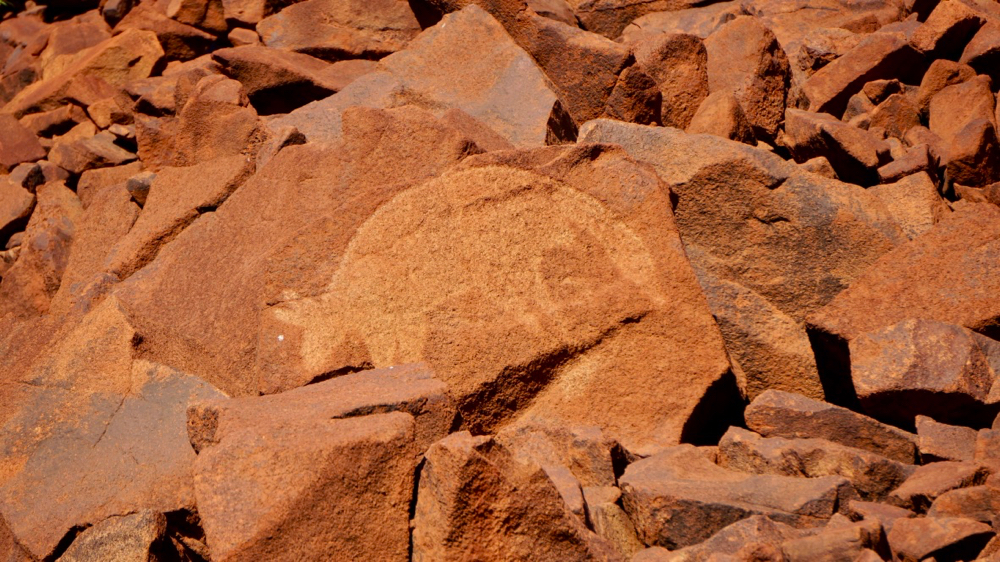
some are easier to spot and understand, others would require some explanation.
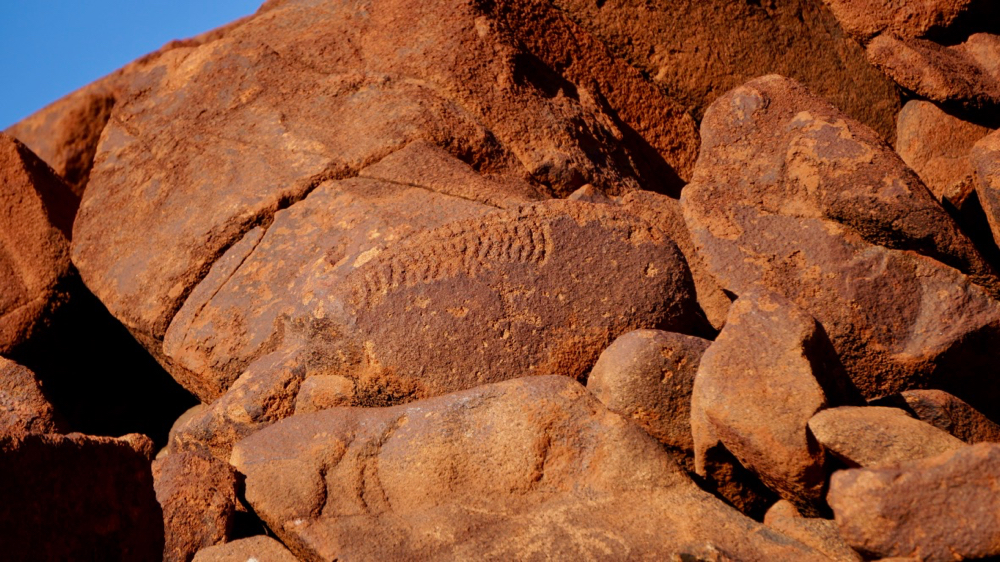
as avid watchers of abc documentaries (first footprints relates here) we know that some of the art dates back to before the last ice age. pictures of the tasmanian tiger, which has been extinct for almost hundred years in tasmania but for much longer on the mainland, have been found here.
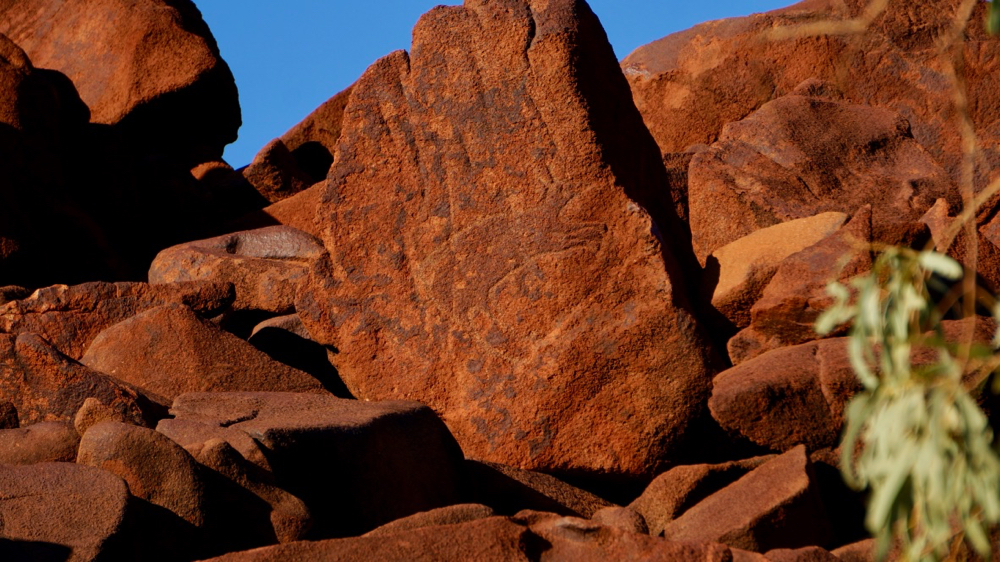
it has been estimated that there are more than a million carvings on the burrup peninsula. sadly it has also been thought that as much as 25% of it may have been destroyed to make way for industrial development.
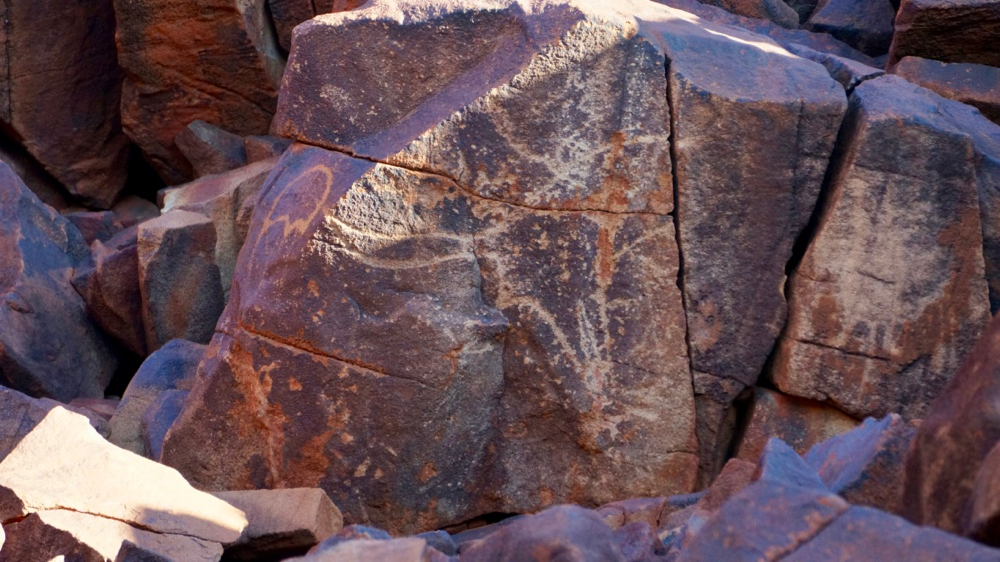
our pollies in canberra like to remind us that our economy must continue to grow. this is what they must have meant. it’s ok, just a few scribbles from the time before – as tony abbott (who also bestowed a knighthood on prince philip) reminds us – civilisation arrived at these shores to the benefit of everyone. good to know.
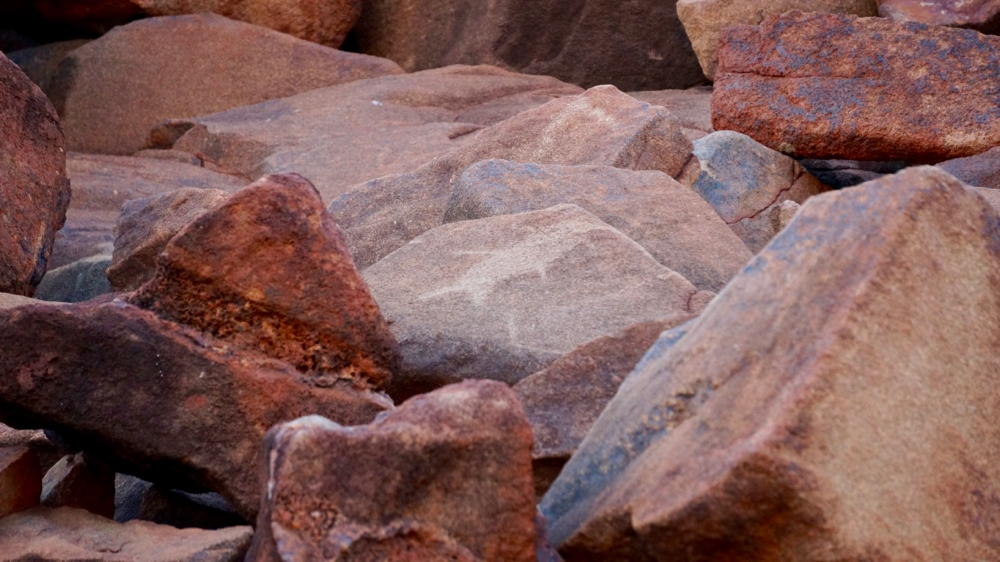
one of the carvings is thought to be the first portrait of a human face – we sadly didn’t find it. the field is massive, and as always with ancient artefacts it is often easy to overlook them.
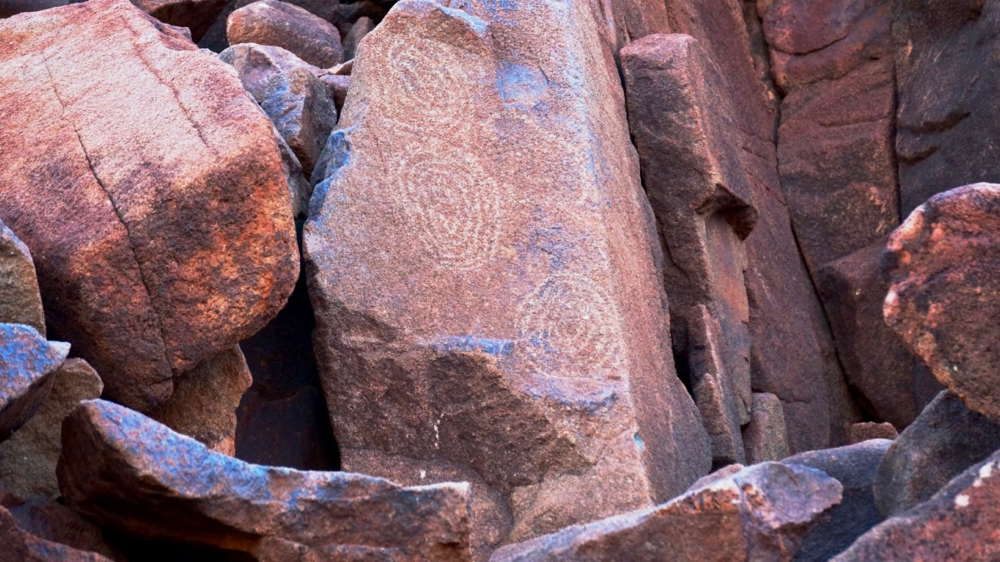
i spotted some in these photos that i didn’t see walking through the gorge.
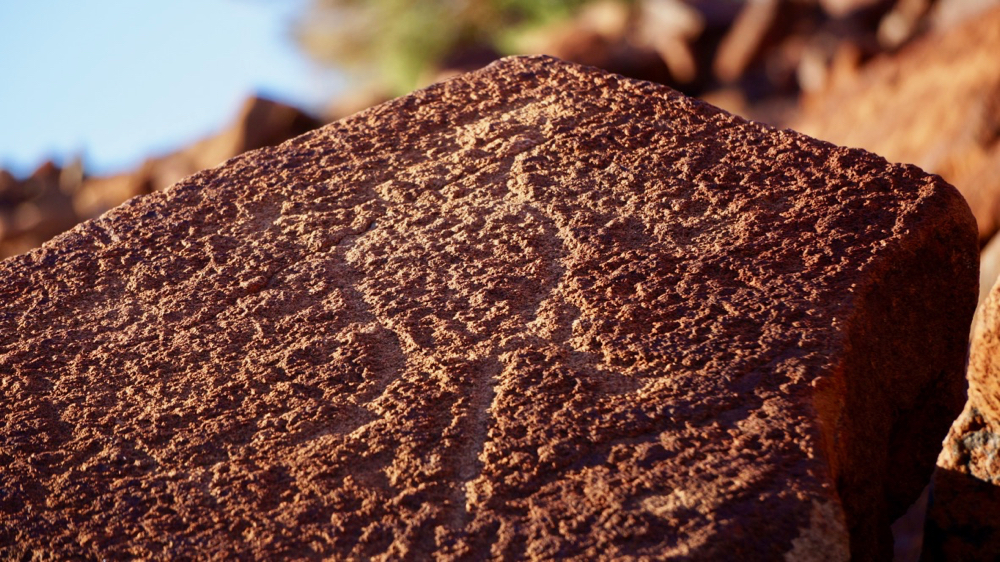
karratha is a mining town, the evidence is everywhere. it’s also the first place since geraldton that we’ve seen (and had to stop at) a traffic light. luckily we remembered what to do.
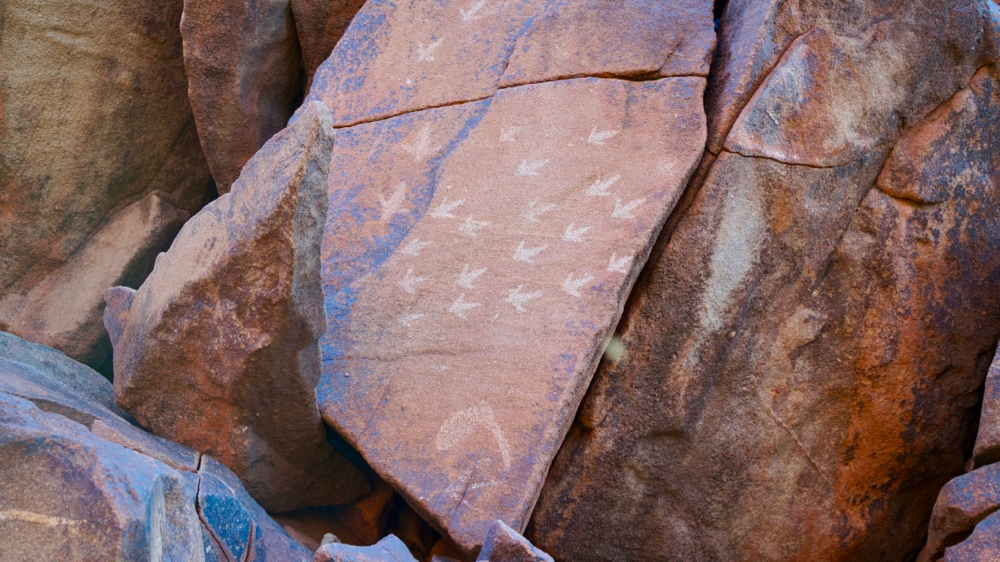
karratha also hosts this amazing collection of some of the oldest human art on the planet.

like all rock art it is threatened by the elements, especially industrial exhausts in the area. then there is always the threat of some idiots thinking it is a good idea to destroy it; sadly we have seen evidence of that as well around the country. but this is something else, more elaborate, a window into our past as a species.
i really hope this will be preserved for future generations.

Impressive drawings. But when it comes to petroglyphs I sometimes have my doubts if they are really old or fake. We saw some in Norway and Sweden and were wondering how they survived since ice age when everything else has vanished due to wind and weather…
you are right, petroglyphs are notoriously difficult to date, it’s all about circumstantial evidence, i.e. weathering patterns. that said that part of australia has not been affected by ice so that can be ruled out as a factor. still scientists are not sure about the precise age, sources say anything between 10.000 and more than 30.000 years, which in geological terms is a blink of an eye. 🙂
a way of better dating is – again circumstantially – through what is actually depicted. since it is known when megafauna animals or the thylacine died out we know that carvings depicting these animals must have been made before they disappeared.